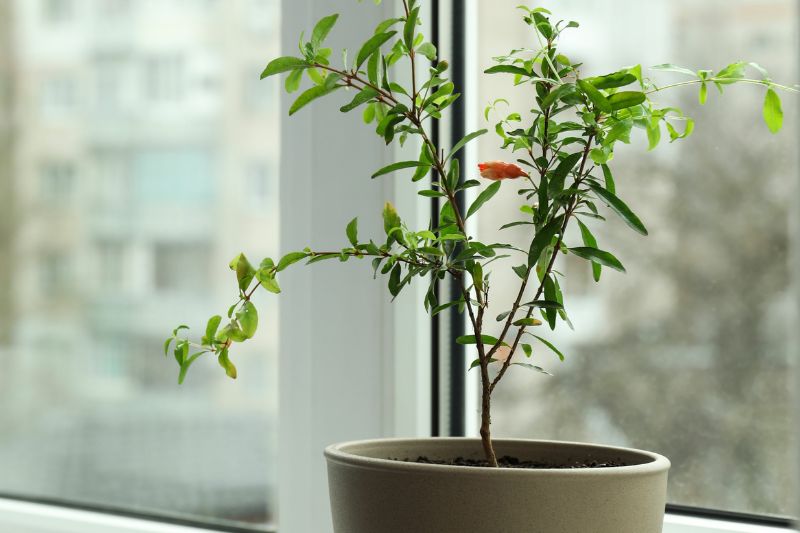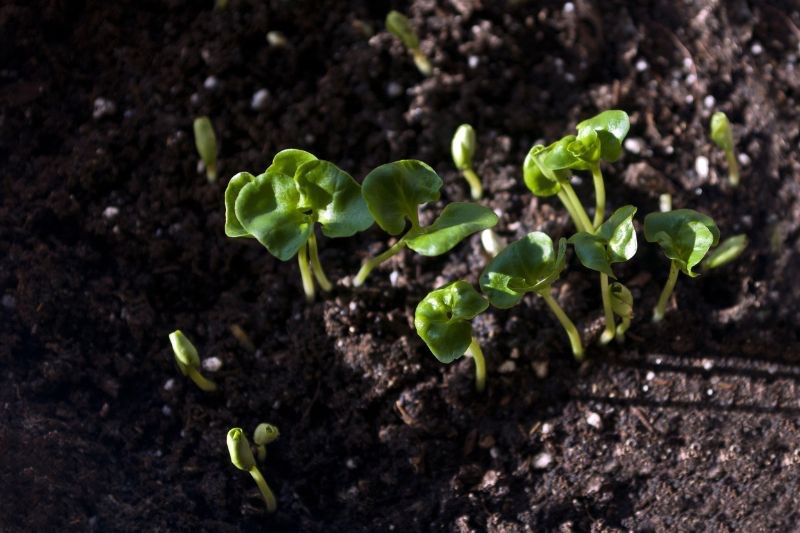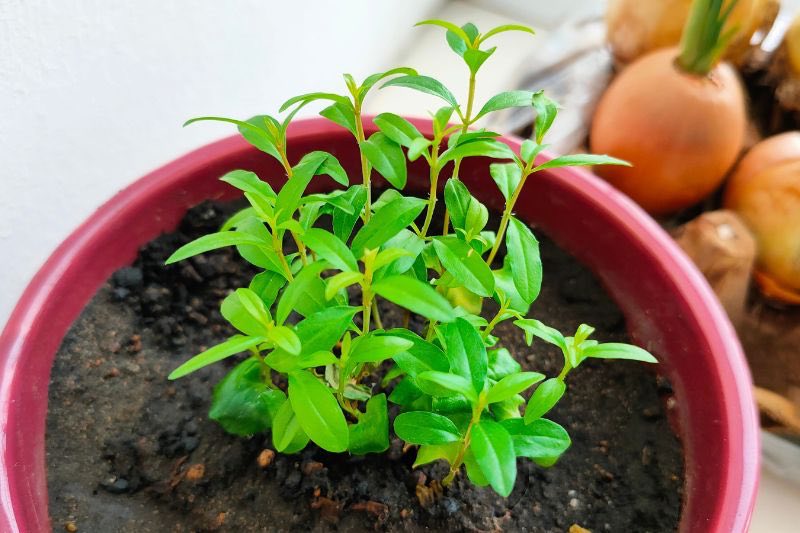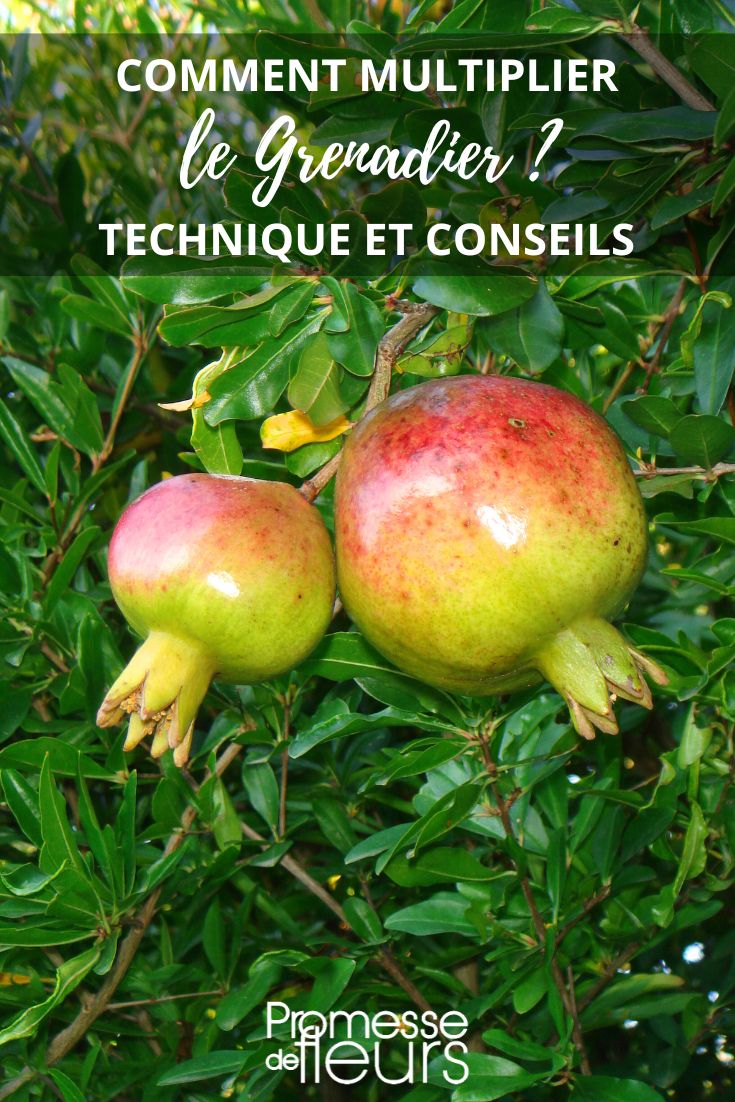Pomegranate trees are prized for their magnificent crumpled and colourful summer flowering, as well as for their large tangy fruits in the common pomegranate Punica granatum.
This Mediterranean shrub appreciates sun and heat. It can be grown both in open ground and in a pot. Its multiplication is done by propagation by cuttings, lifting suckers or by sowing. Let’s look at how to carry out these three techniques easily to obtain new young plants.
Propagate pomegranate by cuttings
Propagation by cuttings produces a new specimen identical to the parent plant, with the same characteristics (colour and shape of flowers, fruit, etc.). It is carried out for both fruiting and ornamental pomegranate plants. Remember that the latter are sterile, therefore grown only for their ornamental qualities.
This is the simplest and most effective method to multiply pomegranate.
When to do it?
Cuttings are taken in late winter from shoots about 1 year old (about 0.5 to 1 cm in diameter). This is done before first buds open (bud burst period). Carry out cuttings between February and March, depending on region.
Cuttings can also be taken from semi-hardwood shoots (those that grew in spring and are beginning to harden) at the end of summer.
Required equipment
- Pruning shears previously disinfected;
- a plastic or terracotta pot about 15 cm deep with a pierced base;
- a pencil or stick;
- potting compost for sowing and potting or a mix of garden soil, general potting compost and sand;
- rooting hormone (plant hormone) (facultative);
- a mister or a watering can with a fine rose.
How to proceed with pomegranate cuttings?
- Using a pruning shear, cut several shoots about 20–30 cm long from your bush. They should look vigorous and healthy, showing no signs of wounds, disease or parasites. Cut below an eye, that is a developing bud.
- Fill the pot with the rich but well-drained substrate.
- Using a pencil or stick, make planting holes (1 to 3 per container).
- Dip the shoots in rooting hormone (facultative).
- Insert the shoots into the substrate up to two-thirds of their length, keeping at least one eye above the substrate.
- Firm the substrate gently with your fingers around the shoots.
- Water and keep surface slightly moist until new leaves form.
- Keep your cuttings protected from cold in winter, in a bright, frost-free place, sheltered from direct sun.
- Pot on in spring. Final planting in open ground can be done from the following year.
To hasten establishment of your pomegranate cuttings, you can favour a bagging method, placing over the shoots either:
- a cloche;
- a transparent plastic bag (freezer-type bag);
- a cut and inverted plastic bottle.
This helps retain humidity and create a warm, humid atmosphere favourable to plant development. Ventilate regularly to avoid development of fungal diseases.
To learn more: “Propagation by cuttings: everything you need to know about different techniques and our advice”.

Lifting and taking pomegranate suckers
Pomegranate can develop and reproduce naturally by means of suckers. These underground shoots develop from the roots, creating what is called a sucker, which will become a new shoot. They have the advantage of already having a small root system, which favours establishment. In addition, they are perfect clones of the parent plant, faithfully reproducing its genetic characteristics.
When to do it?
Removing suckers is done in autumn, outside any possible frost periods.
Required equipment
- a spade or a small shovel;
- Pruning shears previously disinfected;
- a plastic or terracotta pot with a pierced base;
- potting compost for Mediterranean plants or a mix of garden soil and sand;
- a watering can.
How to divide and lift pomegranate suckers?
- Choose a young pomegranate shoot measuring between 15 and 20 cm long.
- Using a spade or a small shovel, dig around the sucker to obtain a rootball about 20 cm in diameter.
- Cut the root connecting the young plant to the parent with a pruning shear.
- Prepare a pot with a pierced base, and fill it with substrate.
- Plant the young plant in it, then firm the soil with your fingers.
- Water generously.
- Apply an organic mulch at the base of the plant to retain moisture.
- Keep in a bright, frost-free position until the following spring.
Sowing pomegranate
Sowing is possible to multiply fruiting pomegranate, but it requires a lot of patience. This bush grows slowly and you must wait about 4 to 5 years before the first flowers. Sowing is the most natural multiplication method, but does not always guarantee an identical specimen to the parent plant.
When to do it?
Pomegranate sowing is done in spring, from February to May, when ambient temperature reaches about 20°C. If you have a conservatory or greenhouse, you can certainly speed up the sowing.

Required equipment
- pomegranate seeds ;
- a bucket, tray or planter;
- potting compost for sowing and potting or a mix of garden soil and sand;
- a mister and a watering can.
How to proceed with pomegranate sowing?
- Fill a bucket or tray with the substrate.
- Place the seeds spaced about 10 cm apart, then cover with about 1 cm of substrate.
- Keep substrate moist until germination. To do this, mist with a mister whenever the surface dries.
- Place the container in a shaded position.
- Optionally add a lid or transparent cloche to maintain warm, humid conditions until emergence (which can take more than a month). Ventilate regularly to avoid development of fungal disease, notably damping-off.
- As soon as seedlings have developed several leaves and reach about 10 cm, pot on into individual buckets or pots. Be gentle to avoid damaging young roots when extracting plants (use a tablespoon, for example).
- Young pomegranate young plants are then placed in a sunny position and watered regularly.

































Comments